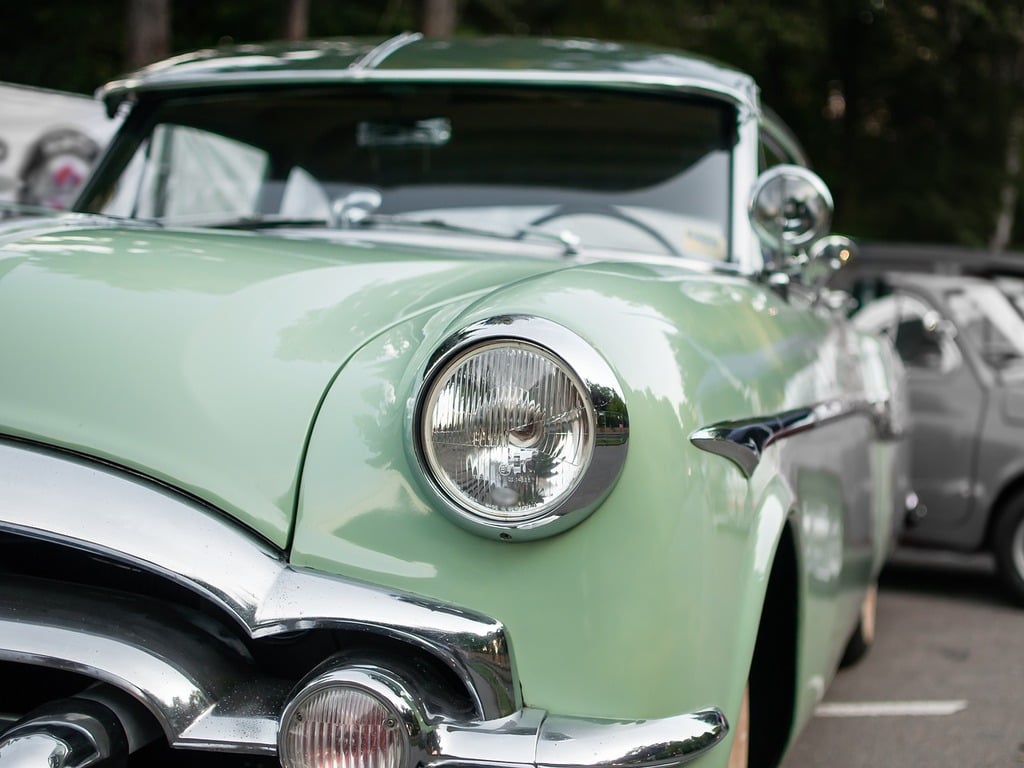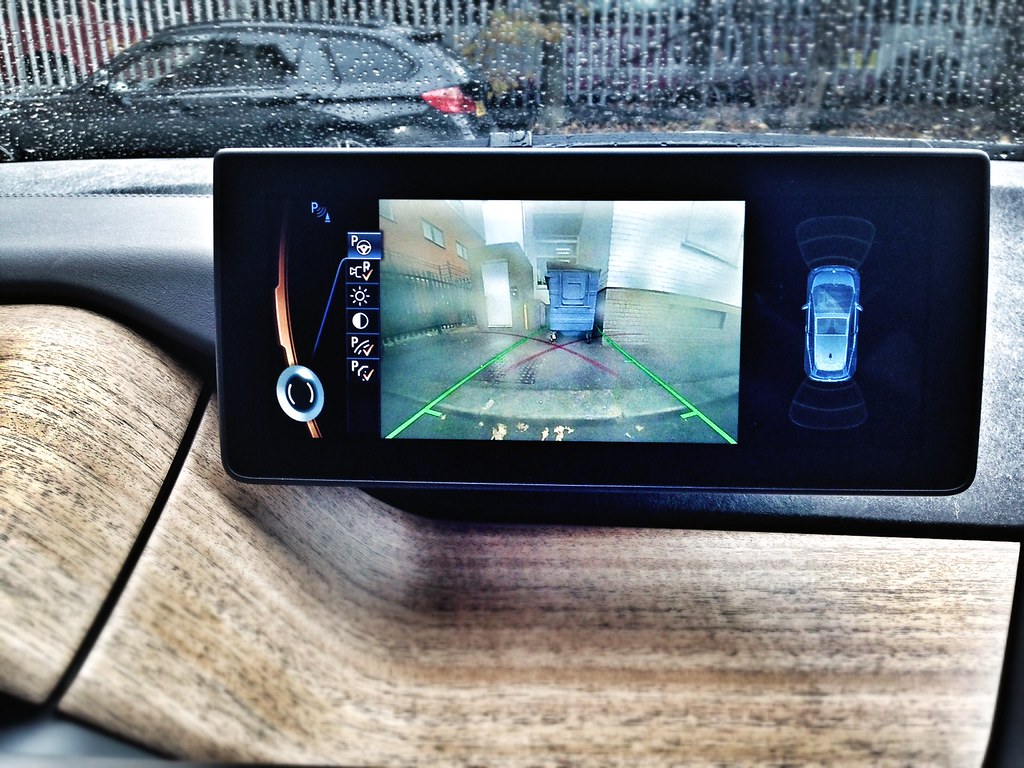
Reverse parking, for many drivers, evokes a sense of dread akin to parallel parking. It’s that one maneuver that can leave even experienced motorists feeling flustered, often resulting in crooked cars, bumped curbs, or an embarrassing game of automotive Tetris. We’ve all been there, spending agonizing minutes trying to perfectly align our vehicles, only to find ourselves too close to a neighboring car or awkwardly angled in the spot.
But what if there was a simple, foolproof method to conquer reverse parking once and for all? What if you could glide into any parking space with confidence and precision, leaving behind the anxiety of misaligned wheels and the fear of fender benders? Thankfully, the days of parking woes are over. Driving experts have unveiled a “clever” hack that promises to transform your reverse parking skills, allowing you to nail the tricky technique every single time, in just a few straightforward steps.
This isn’t just about convenience; it’s about safety, efficiency, and ultimately, empowering you to become a more skilled and confident driver. This in-depth guide will break down the expert-approved strategies, turning a once-daunting task into a seamless part of your daily drive. Get ready to upgrade your parking game and say goodbye to parking stress forever!

1. **Why Reverse Park? Unlocking the Safety and Convenience Benefits**For many, the default method of parking is to simply drive forward into a spot. While this seems straightforward, savvy drivers understand the significant advantages of backing into a parking space. It might feel counterintuitive at first, but the benefits in terms of safety and ease of exit are substantial, making it a habit worth cultivating.
One of the biggest reasons to embrace reverse parking is enhanced safety. A 2020 study cited in our expert sources found a staggering statistic: “a full 90% of parking-related serious injuries and fatalities happened because someone was backing out of a parking spot.” This highlights a critical point – backing *out* of a spot, where visibility is often obstructed by adjacent vehicles or blind spots, carries a much higher risk than backing *into* one.
When you reverse into a spot, your vehicle’s front is directed towards the parking lot. This orientation provides a clearer, unobstructed view of the aisle when it’s time to leave. You can easily spot oncoming vehicles and pedestrians, significantly reducing the chances of accidents. It transforms the potentially hazardous act of exiting a parking space into a much smoother and safer maneuver, affording you a level of visibility that forward parking simply cannot match.
Beyond safety, reverse parking also offers a surprising degree of convenience. Imagine pulling out of a busy parking lot with ease, without the need for multiple adjustments or craning your neck to see around large SUVs. This method empowers you to navigate crowded environments more efficiently and with less stress. It’s a smart habit that saves you time and reduces frustration in the long run, proving that a little extra effort upfront can pay dividends later.
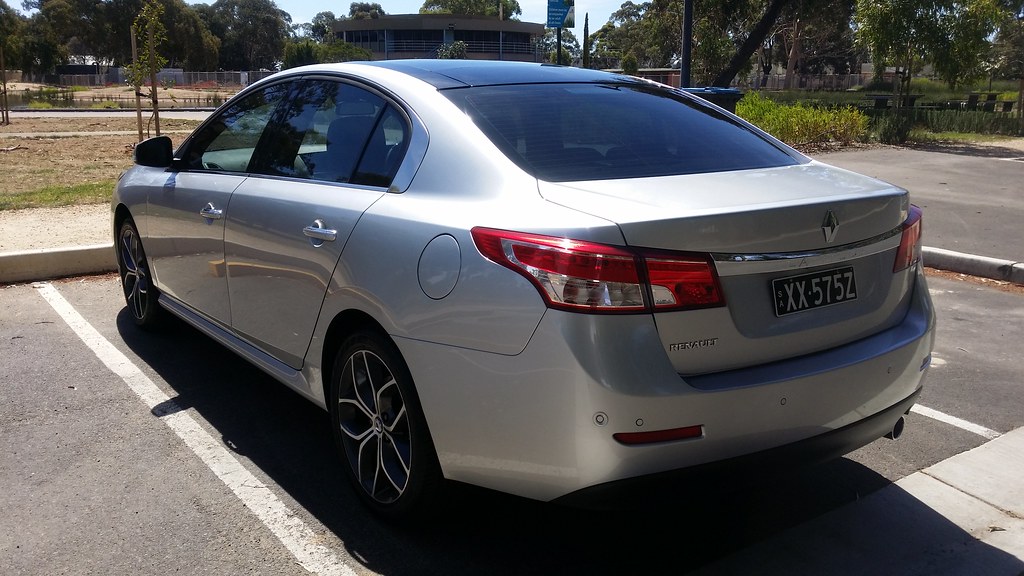
2. **Scouting the Perfect Spot: How to Choose Your Reverse Parking Haven**Before you even think about engaging reverse, the first crucial step to successful parking is selecting the right spot. Just like a chef picks the freshest ingredients, a smart driver identifies the optimal parking space to minimize hassle and maximize safety. This isn’t always possible in a crowded lot, but knowing what to look for can make a significant difference in your parking experience.
Our experts advise, “Look for a spot that’s not between 2 other cars.” This immediately reduces the complexity of the maneuver, as you only have to worry about one potential obstacle, or none at all if it’s an end spot. While a busy parking garage might not always offer this luxury, aiming for such a space, especially when practicing, will undoubtedly alleviate a great deal of pressure and make the process far less stressful.
If you anticipate being parked overnight, there’s another important consideration: illumination. Ensure there’s “plenty of overhead light so there’s less of a chance that your car could get broken into.” Security is often an overlooked aspect of parking, and choosing a well-lit area can provide an added layer of protection for your vehicle. It’s a simple proactive measure that contributes to your peace of mind.
For those rare moments when you find yourself in a larger lot “with no stops between the rows of spaces,” there’s an ultimate hack: “look for a spot where you can pull through to the next row.” This ingenious trick allows you to achieve the benefits of reverse parking—being nose-out for easy exit—without actually having to back up at all. It’s the ultimate efficiency hack for those fortunate enough to find such a setup, showcasing how a strategic approach to parking begins long before you touch the brake pedal.

3. **Signaling Your Intentions: Communicating Your Move to Other Drivers**Once you’ve identified your ideal parking spot, the next vital step is to communicate your intentions clearly to other drivers and pedestrians around you. In the often-chaotic environment of a parking lot, clear communication is paramount for safety and preventing misunderstandings. This isn’t just a courtesy; it’s a critical safety measure that can avert potential collisions and keep traffic flowing smoothly.
The simplest and most effective way to signal your plans is to “Flip on your turn signal.” If the parking spot is on your right, activate your right turn signal; if it’s on the left, use your left. This straightforward action, combined with your car’s reverse lights, instantly tells anyone behind you that you’re preparing to back into that empty space you’ve just passed. It leaves no room for ambiguity, ensuring others know to give you space.
In situations where a car might be following too closely or doesn’t seem to get the message from your turn signal alone, our experts suggest an additional tactic: “try flipping on your hazards.” Your hazard lights, flashing simultaneously, send an even stronger signal that you’re stopping or maneuvering. This usually prompts other drivers to understand your intention and either wait patiently or find an alternative route around you, preventing frustration and potential hazards.
Remember, a parking lot is a shared space, and clear communication helps maintain order and safety for everyone. Taking a moment to activate your signals costs nothing but can save a lot of trouble. It’s an essential habit for any driver striving for proficiency and courtesy on the road, setting the stage for a smooth and successful reverse parking maneuver.
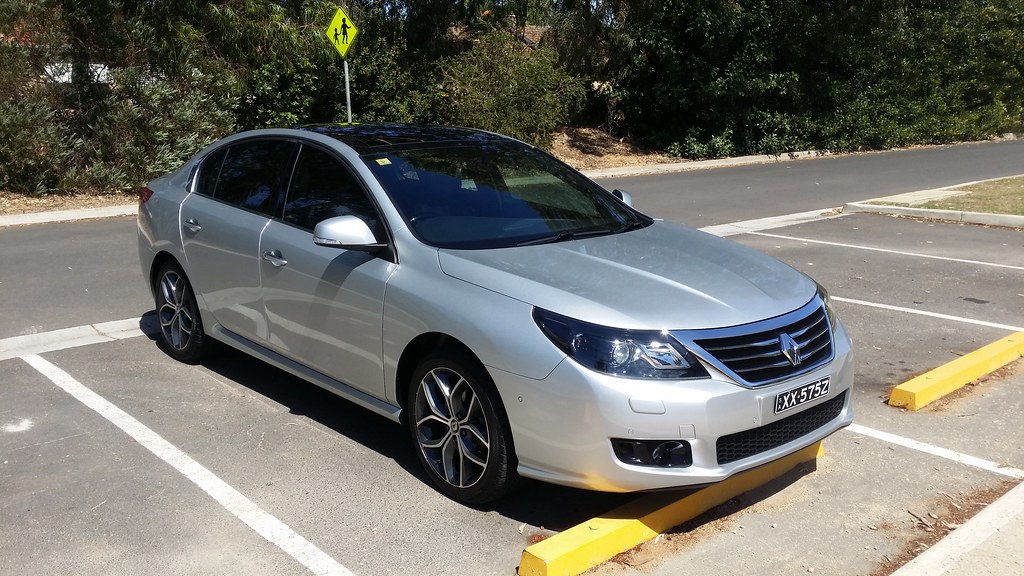
4. **The Zutobi Method – Step 1: Initial Car Positioning and Alignment**Now that you’ve chosen your spot and signaled your intentions, it’s time to delve into the core technique of expert reverse parking. The driving specialists at Zutobi have broken down this complex maneuver into four “easy” steps, and the first one is all about precise initial positioning. Getting this right sets you up for success, ensuring a smooth entry into your chosen space.
According to Zutobi, “Step one: activate your turn signal [indicator] and position your car a car-width away from the parked vehicle.” This initial distance is critical. Being too close will make your turn too tight, while being too far will widen your arc unnecessarily. Aim for roughly the width of another car between your vehicle and the one you’re parking next to, or the edge of the parking bay if it’s an end spot.
The next part of this first step is equally important for alignment: “Ensure that your brake lights are aligned with those of the other vehicle.” This visual cue acts as your anchor point. By lining up your rear bumper’s brake lights with those of the car beside your target spot, you establish the perfect pivot point for your reverse maneuver. It’s a simple yet highly effective trick that eliminates much of the guesswork.
This seemingly small detail makes a huge difference in the outcome. It ensures that when you begin to turn, you’re doing so from a position that allows your car to enter the space at the correct angle. Mastering this initial setup is foundational to the entire Zutobi method, transforming a potentially tricky start into a confident, controlled movement. Take your time with this step, as precision here pays off immensely.

5. **The Zutobi Method – Step 2: Full Lock Turn and Mirror Guidance**With your car perfectly positioned according to Step 1, the next phase of the Zutobi hack involves initiating your turn and using your mirrors as your trusted guides. This is where your car begins its graceful arc into the parking spot, and understanding how to apply steering input correctly is key to a flawless execution. It’s less about speed and more about controlled, deliberate movement.
Zutobi’s second instruction is clear: “turn the steering wheel fully in the direction you want to reverse.” This means locking your steering wheel all the way to one side – to the right if your spot is on the right, and to the left if it’s on the left. This full lock ensures the sharpest possible turning radius, which is essential for maneuvering into a tight parking space efficiently. There’s no need for partial turns or guessing; just turn the wheel as far as it will go.
As you begin to “Slowly back up,” the critical element is constant observation using “your mirrors to guide you.” Your side mirrors become your eyes, allowing you to monitor the clearance between your vehicle and any adjacent cars or obstacles. Keep a close watch on both sides, making small mental adjustments if you see yourself getting too close. The slow pace is non-negotiable here; it gives you ample time to react and refine your trajectory.
This step combines assertive steering with cautious backing. The full lock initiates the turn, and your mirrors provide real-time feedback, allowing you to adjust your speed and path as needed. It’s a dance between intentional input and responsive observation, ensuring that your car is moving exactly where it needs to go while keeping a safe distance from its surroundings. Patience and constant mirror checks are your best allies here.

6. **The Zutobi Method – Step 3: Straightening Up for Precision**Once your vehicle has carved a significant arc into the parking space, the third step in the Zutobi method is to begin straightening your steering wheel. This crucial adjustment transitions your car from a turning motion to a straight-line reverse, aligning it perfectly within the confines of the parking bay. It’s the moment where your car starts to look truly “parked” and square.
According to the experts, “once straightened, return the steering wheel to the centre.” The art here is knowing *when* to start straightening. As you reverse, keep an eye on your side mirrors. You’ll notice your car’s body becoming more parallel with the lines of the parking spot, or with the vehicle next to you. The goal is for your rear tires to be parallel in the spot – that’s the ideal moment to begin unwinding your steering wheel.
Returning the steering wheel to the center means that your front wheels are now pointing straight ahead. This action neutralizes the turning force, allowing your car to move directly backward without further curving. It takes a bit of practice to develop a feel for your car’s turning radius and the precise moment to straighten, but with a few tries, it becomes intuitive. If you have a backup camera, it can be particularly helpful at this stage, as it often shows dynamic lines that indicate your trajectory.
This step is a fine-tuning maneuver. It’s about bringing your car into perfect alignment, ensuring that you’re not angled or too close to one side. By smoothly returning the wheel to the center, you prepare your car for the final push into the spot, guaranteeing a neat and symmetrical park. It’s the bridge between the initial turn and the final, settled position.
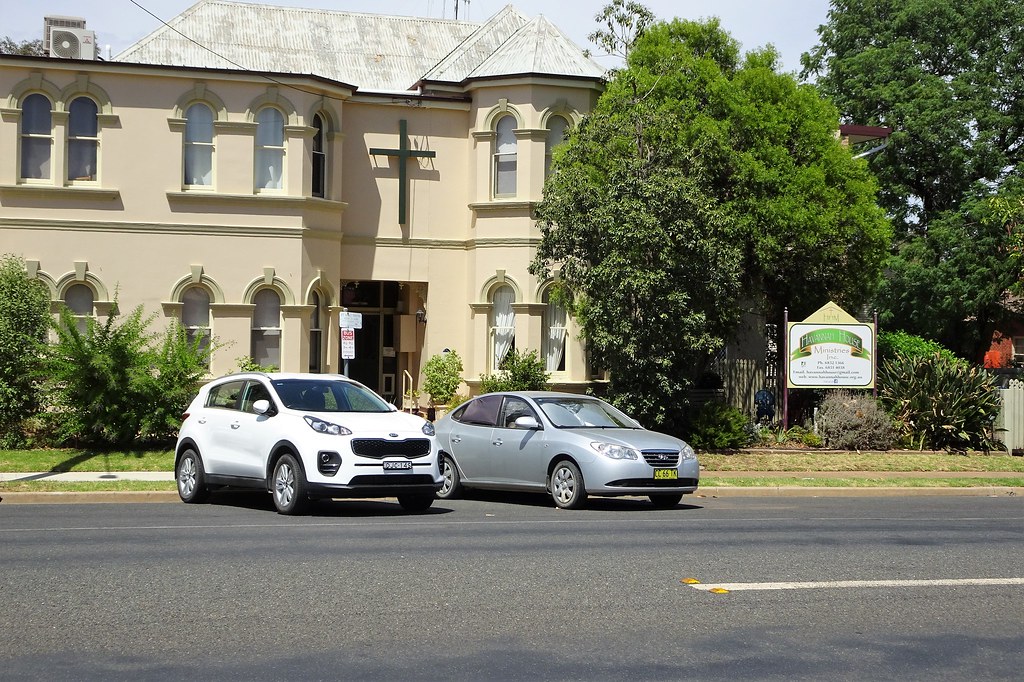
7. **The Zutobi Method – Step 4: Final Reversal for a Neat Park**You’re almost there! With your steering wheel straightened and your car aligned, the final step in the Zutobi reverse parking hack is to complete your backward journey into the spot. This is the culmination of all the previous precise movements, bringing your vehicle to its perfect resting place. The emphasis here is on controlled, steady movement until you reach the optimal depth within the parking bay.
Zutobi’s final instruction is simple and direct: “continue to reverse until your car is parked neatly in the spot.” This means gently and slowly continuing to back up, maintaining the straight trajectory you established in Step 3. Your goal is to position your car fully within the lines, without obstructing the aisle or bumping into a curb or another vehicle behind you.
As you near the end of the spot, glance forward at the ends of the lines that mark the parking spaces. A good visual cue is to stop when “your front bumper is even with the ends of those lines.” This ensures you’re deep enough into the spot to be clear of the main thoroughfare, yet not so deep that you’re risking contact with anything behind you. If your car has a backup camera, it can be an invaluable tool at this stage, helping you gauge the remaining distance with precision.
Ultimately, this step is about bringing it all home. It requires a final check of your surroundings – mirrors, backup camera, and even a quick glance over your shoulder if necessary – to confirm your position. A neat park isn’t just about being straight; it’s about being appropriately positioned within the allocated space, ready for a safe and easy exit. With these four steps, you’ve transformed a challenging maneuver into a consistent success.

8. **Beyond the Zutobi Arc: The “Two-Spot Rule” for Initial Positioning**While the Zutobi method provides an excellent foundational framework for reverse parking, there are additional detailed positioning tricks that can further refine your approach and guarantee a perfect park. One such ingenious technique, often employed by seasoned drivers, is what we’ll call the “Two-Spot Rule” for initial alignment. This isn’t just about getting close; it’s about setting up the optimal trajectory before you even engage reverse gear, removing guesswork and bolstering your confidence.
This trick involves driving slightly past your target parking space to establish a precise visual reference point. Specifically, our experts suggest you “Pull forward to the third line past the spot where you want to park” or “Line up your rearview mirror with the outside line of the second spot over.” This means if you’re aiming for a spot, you count the line between your spot and the next one as “one,” the next line as “two,” and position your car relative to the third line. It’s a remarkably simple yet highly effective visual marker that dictates your starting point for the backward maneuver.
The beauty of this “third line” reference is its adaptability and precision. For an average 4-door sedan, aligning your rearview mirror with this line provides the ideal distance and angle. However, vehicles come in all shapes and sizes, and this hack accounts for that. For a smaller car, you might find more success by lining up your *front* bumper with that third line. If you’re commanding an SUV or a larger truck, extending your reach a bit further by lining your front bumper up to the *fourth* line can give you the necessary clearance and turning radius to maneuver seamlessly.
Achieving this initial, precise pull-up position also includes ensuring your car is “no more than 1 foot (0.30 m) away from the openings of the spots or the bumpers of the other parked cars.” This close proximity ensures that when you begin your turn, your vehicle enters the space with a tight, controlled arc. Mastering this seemingly small detail—the exact distance and the correct visual line for your specific vehicle—will become automatic with practice, shaving seconds off your parking time and delivering a consistently straight park.
This detailed approach to initial positioning is not just about convenience; it’s a proactive safety measure. By establishing the correct starting point, you minimize the number of steering adjustments needed during the actual reverse, reducing the chances of overshooting or getting too close to other vehicles. It creates a controlled environment for your maneuver, laying a solid foundation for the rest of the steps and significantly enhancing your precision. It’s about taking command of the space before the reverse even begins, making the entire process feel more intuitive and less like a series of frantic reactions.

9. **Crucial Observation: Turning Your Head and Beyond the Backup Camera**In the age of advanced automotive technology, it’s easy to become overly reliant on backup cameras and parking sensors. While these tools are undoubtedly helpful, they should augment, not replace, fundamental driving skills. For flawless reverse parking, especially in busy environments, one of the most crucial observation tips is to actively “Turn your head to see where you’re going as you reverse” – and not just occasionally. This proactive approach ensures a comprehensive understanding of your surroundings that no screen can fully replicate.
The reasoning behind this advice is multi-faceted. When you physically turn your head and look over your shoulder in the direction your car is moving, you gain a much broader field of vision compared to what a rearview or side mirror offers. This allows you to spot potential hazards, such as low-lying obstacles, unexpected pedestrians, or other vehicles, that might be outside the camera’s fixed angle or the mirrors’ limited scope. It’s about engaging all your senses and literally seeing the path your vehicle is taking, providing real-time, unfiltered information.
Furthermore, if you’re working towards passing a driving test, it’s highly probable that you won’t be permitted to rely solely on your backup camera. Developing the habit of turning your head ensures you’re prepared for any scenario, proving your competence and situational awareness as a driver. Even with a backup camera displaying dynamic guidelines, “you’ll actually be able to see where you’re going much better if you turn around.” This direct visual feedback enhances your spatial judgment and helps you make quicker, more accurate adjustments during the maneuver.
Remember to “Glance in all directions, especially in busy parking lots.” Your eyes should constantly scan not just behind you, but also to your sides and even quickly forward, anticipating any cross-traffic or unexpected movements. This continuous, multi-directional observation is a hallmark of an expert driver and is absolutely vital for safely and precisely guiding your vehicle into a reverse parking spot. It’s an empowering technique that gives you full command over your vehicle and its environment.
This holistic approach to observation also builds a deeper connection with your vehicle and its movements. Relying less on electronic aids and more on your natural senses improves your spatial awareness and judgment, skills that are invaluable in all aspects of driving, not just parking. It’s about becoming a truly integrated part of your car, understanding its dimensions and how it interacts with the environment. This direct engagement fosters a level of confidence and control that transcends simple technological assistance, empowering you to navigate any parking challenge.

10. **The Art of Adjustment: Correcting Mid-Maneuver Errors**No matter how precisely you follow the initial steps, situations arise where you might find your car slightly ofilter or too close to an adjacent obstacle during the reverse parking process. This isn’t a sign of failure but an opportunity to apply advanced adjustment strategies. Expert drivers understand that parking is a dynamic process, and knowing how to make quick, confident corrections is just as important as the initial setup. The goal is to correct effectively without having to completely abandon the maneuver.
A common scenario is realizing you’re getting “too close to neighboring cars for comfort.” The immediate, actionable advice here is simple: “stop.” Panic leads to errors, so pausing gives you a moment to assess. Then, to create the necessary room, “Pull forward a bit and turn your wheel just a little in the opposite direction (away from the spot) to give yourself a little room, then keep backing.” This subtle forward adjustment, combined with a slight counter-steer, gently shifts your vehicle’s angle, allowing you to re-enter the reverse trajectory with improved clearance. It’s a nuanced dance of small movements that can save you from a full restart.
Once you’ve successfully backed into the general area of the spot, it’s time for the final alignment check. Our experts recommend a proactive approach: “Open your door or stick your head out the window to see where the line is.” This direct visual inspection is invaluable for confirming your proximity to the lines and adjacent vehicles. If you find yourself “too close to one side—like right up next to the line—you might not be able to get in your car when you come back out.” This direct observation reveals any slight crookedness or misalignment that might not be obvious from the driver’s seat alone.
If adjustments are needed, whether you’re slightly crooked or over a line, “no big deal! Just pull forward and correct the angle so that you can back in straight.” This iterative process of small forward corrections followed by continued reverse movements is key to achieving a perfectly square park. Sometimes, however, if you’re “having a hard time, it might be better to pull all the way out and start over from the beginning.” There’s no shame in taking a deep breath and starting fresh; it’s far better than forcing a difficult park and risking damage.
Ultimately, the ability to adjust gracefully during a parking maneuver is a hallmark of an expert driver. It demonstrates composure under pressure and a practical understanding that perfection is often achieved through iterative refinement. Don’t view a slight misalignment as a failure, but rather as an opportunity to apply your learned skills. With each successful correction, you’re not only perfecting your park but also reinforcing your problem-solving abilities behind the wheel, making you a more adaptable and confident motorist. This flexibility is what truly distinguishes a skilled parker.

11. **Securing Your Vehicle: The Final Steps for a Safe Park**You’ve successfully guided your vehicle into the reverse parking spot, aligning it perfectly within the lines. While the hard part of maneuvering is over, the process isn’t complete until you’ve properly secured your vehicle. These final, often overlooked steps are crucial for the safety of your car and those around it, ensuring that your masterful parking job truly sticks and provides peace of mind. It’s the meticulous conclusion to a well-executed maneuver.
The primary action, of course, is to “Put your car in park and turn it off.” Engaging the ‘Park’ gear in an automatic transmission locks the drivetrain, preventing the vehicle from rolling. For manual transmissions, or as an added layer of security for automatics, it’s imperative to “Engage your parking brake before you leave your car.” This mechanical brake provides redundant protection, especially on inclines, guaranteeing your car remains stationary. These actions are fundamental to preventing unintended vehicle movement and potential accidents in a busy parking environment.
Beyond securing the vehicle itself, consider the immediate surroundings as you prepare to exit. When opening your door, a moment of mindfulness can prevent a minor but annoying incident. “Just be careful not to open it too quickly and slam it into the car next to you.” Even after a perfect park, proximity to other vehicles is inherent in a parking lot. A slow, controlled door opening shows respect for other drivers’ property and helps maintain a harmonious parking experience for everyone.
Finally, before stepping out, a swift but thorough check of your surroundings is a mark of a truly attentive driver. “Check your mirrors quickly before you get out of your car, just to make sure there’s no one walking beside your car that you might wack with your door.” Pedestrians, especially children or those distracted by their phones, can appear suddenly. A final glance confirms the immediate area is clear, allowing you to exit your vehicle safely and confidently, having completed the entire reverse parking process with expert finesse.
Read more about: Seriously What Happened? 13 Once-Reliable Powerhouses Mechanics Just Don’t Trust Anymore

12. **Mastering Angled Parking Spots: A Simpler Reverse**While the primary focus of reverse parking often revolves around the challenge of perpendicular spaces, there’s a lesser-known hack that applies to a different type of parking spot: angled spaces. These spots, commonly found in shopping centers or older parking lots, present a unique opportunity for an even simpler reverse parking experience. If you find yourself in a lot where “the parking spots are slanted rather than perpendicular,” you’re in for a treat, as reverse parking into them can be significantly easier.
The inherent design of angled parking spots means they are already oriented to assist your turning motion. Unlike perpendicular spots which require a full 90-degree pivot, “these are much easier to back into than perpendicular spots because you don’t have to turn a full 90 degrees.” The angle effectively pre-aligns your vehicle for the reverse maneuver, requiring less aggressive steering input and a wider, more forgiving arc. This often translates to a smoother, quicker, and less stressful parking experience, making it an ideal method for drivers of all skill levels, especially those still building confidence.
However, while the technique itself is simpler, there’s a crucial caveat to consider before implementing this hack. It’s imperative to “check for signs first—you aren’t allowed to back into these spots in some places.” Certain jurisdictions or private property regulations may prohibit reverse parking into angled spots, often due to concerns about traffic flow, visibility upon exit (though less of an issue with reverse parking), or simply historical precedent. Always be aware of local signage and rules to ensure you’re parking legally and respectfully.
When permitted, backing into an angled spot offers all the benefits of reverse parking—enhanced visibility upon exit, reduced risk of accidents, and a more streamlined departure—with the added bonus of simplified execution. The slightly angled approach minimizes the need for intricate steering adjustments, allowing you to glide into the spot with greater ease. It’s a smart adaptation of the reverse parking principle, transforming a potentially tricky maneuver into a surprisingly straightforward task.

13. **The Power of Practice: Making Reverse Parking Second Nature**The journey to becoming a reverse parking pro isn’t just about memorizing steps; it’s about repetition, refinement, and building muscle memory. As with any skill, true mastery comes through consistent “Practice this a few times and it’ll become automatic.” This isn’t just a suggestion from experts; it’s a fundamental truth for skill acquisition, turning a once-daunting task into an effortless, intuitive part of your daily driving routine. Embrace the process, and watch your confidence soar.
For those just starting out or feeling a bit rusty, the best environment for initial attempts is an empty, low-pressure setting. Our sources implicitly suggest this when discussing initial practice scenarios: “If you are practicing reverse parking for the first time, it might be a good idea to find an empty parking lot for your first few tries.” This allows you to focus solely on the mechanics of the maneuver without the added stress of other vehicles, pedestrians, or time constraints. You can make mistakes, adjust, and learn without feeling rushed or self-conscious, laying a solid foundation for more challenging situations.
Consistent practice fundamentally changes how your brain and body approach the task. Each repetition solidifies the coordination between your steering, speed control, and observational skills. What initially feels like a series of disjointed instructions—turn wheel, check mirror, straighten—gradually fuses into a fluid, almost instinctive movement. This automation means less conscious effort and more mental bandwidth to observe your surroundings, enhancing both safety and efficiency. It’s the difference between trying to remember lines and performing a well-rehearsed play.
Ultimately, the goal of practice is not just competence, but confidence and efficiency. Once reverse parking becomes second nature, “it’ll only take a few seconds longer than if you’d pulled in.” This slight increase in initial time is more than offset by the immense advantages upon exit, not to mention the reduction in parking-related stress. So, dedicate some time to practice in a safe environment, and you’ll soon find yourself effortlessly backing into any spot, transforming a challenge into a comfortable habit.
To maximize the effectiveness of your practice, consider setting small, achievable goals. Perhaps one session focuses solely on the initial positioning, another on smooth steering and mirror checks, and a third on making subtle corrections. Breaking down the complex skill into manageable components can prevent overwhelm and build confidence incrementally. Remember, every successful reverse park, no matter how minor, reinforces the positive habits and brings you closer to effortless mastery, proving that diligent effort truly pays off in the long run.
Read more about: Unlock Urban Parking: The Secret Formula to Master Parallel Parking in 60 Seconds
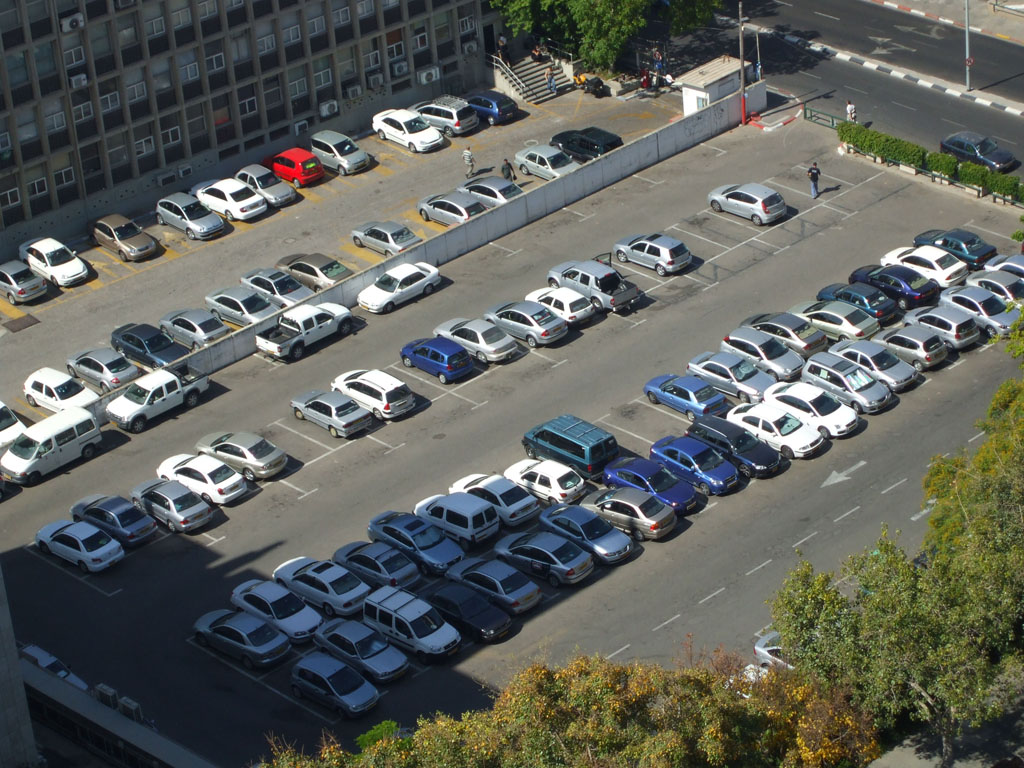
14. **Community Insights and Continuous Improvement: Learning from Fellow Drivers**The beauty of shared knowledge, especially in a community-driven space like the internet, is the rich tapestry of experiences and perspectives it offers. Even with expert-backed techniques, the diverse feedback from fellow drivers can provide invaluable insights and foster a mindset of continuous improvement. The comments sections of expert tips, as noted in our context, are often a treasure trove of “That was so useful!” or even contrasting opinions that highlight the individuality of driving styles and challenges.
Consider the feedback from some commenters who, despite finding the reverse parking hack useful, confessed: “I’m a pro at this parking, but I struggle with parallel.” Or, conversely, “I love reverse parking, I always do it. The forward parking is what I hate the most, even parallel I prefer.” These insights underscore a crucial point: while core techniques are universal, individual drivers may find different maneuvers more intuitive or challenging. This isn’t a flaw; it’s a reminder that every driver’s journey to mastery is unique, and what works effortlessly for one might require more focused practice for another.
This collective experience encourages drivers to view their skills not as fixed, but as constantly evolving. Even if you consider yourself a ‘pro,’ there’s always an opportunity to refine a technique, learn a new nuance, or gain a fresh perspective. Engaging with the experiences of others, whether through online communities or simply observing fellow drivers, keeps you open to new strategies and helps you adapt to different parking scenarios, from busy city streets to expansive mall lots.
Mastering reverse parking, and indeed any driving skill, is an ongoing process of learning, practicing, and adapting. By embracing expert advice, applying detailed techniques, making necessary adjustments, and constantly observing your surroundings, you empower yourself to conquer parking woes. Remember the immense safety benefits and the sheer satisfaction of gliding into a spot with precision. With these hacks in your arsenal, you’re not just parking; you’re driving smarter, safer, and with unparalleled confidence. Get out there, practice these clever hacks, and transform your parking game forever!


